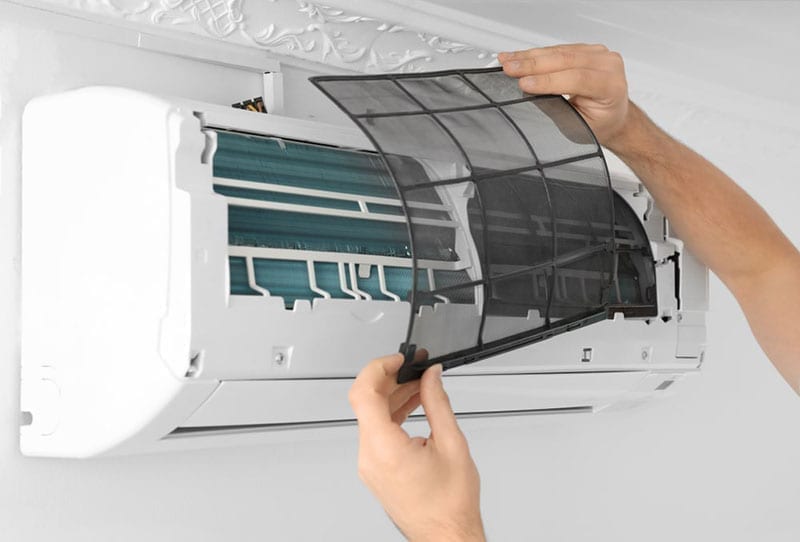How Does VRV Work?
One cutting-edge innovation in HVAC systems that maximizes comfort and energy efficiency is VRV, or Variable Refrigerant Volume. Instead of running at a constant capacity like conventional systems, VRV systems may dynamically change the amount of refrigerant to suit the specific heating or cooling needs of individual rooms in a building. The VRV system’s inverter compressor, located in the outside unit, is responsible for controlling the flow rate of refrigerant and is thus the system’s beating heart.
This compressor regulates its speed according to the total demand from all the interior units that are linked, so that only the quantity of cooling or heating that is needed is supplied. In addition to reducing energy usage, this technique enhances comfort by keeping the building at a constant temperature. Sensors for temperature and occupancy detection are built into every indoor unit of a VRV system. The system uses this data to intelligently control the airflow and temperature in each zone.
It is possible to further improve energy savings and user comfort by integrating smart controls and scheduling functions with VRV systems. Environmental sustainability and economic benefits for building owners and occupants alike are offered by VRV technology, which is a significant improvement in HVAC systems. It efficiently manages numerous zones and adapts to changing occupancy patterns.
How is a VRV System Different?
The key distinction between a Variable Refrigerant Volume (VRV) system and a conventional split system is in its design and operation. A variable refrigerant volume (VRV) system uses just refrigerant to cool the system, as opposed to the chillers or coils used in traditional systems that use water. Because they are not reliant on water, VRV systems are more flexible and can adjust to changing weather conditions.
The inverter compressors of VRV systems enable the compressor motor to adaptively change its speed, which is crucial to the system’s efficiency. Like an automobile’s “eco mode,” this function maximizes efficiency by regulating the temperature to suit the user’s needs. This means that VRV systems can actually save a lot of energy in the long run.
The capacity to include numerous air handlers into a single VRV system is another distinguishing characteristic. The elimination of ducting allows for more precise air distribution with variable refrigerant volume (VRV) systems. As a result, users can improve efficiency and comfort by adjusting the temperature for each individual space. Variable refrigerant volume systems aid in green building certifications like LEED (Leadership in Energy and Environmental Design) by maximizing energy efficiency and decreasing emissions of greenhouse gases.
These systems contribute to environmental sustainability. All things considered, variable refrigerant volume (VRV) systems provide a level of responsiveness, energy efficiency, and adaptability that is uncommon in conventional split systems. Because of these features, they are a good choice for homes and businesses that value energy efficiency and exact temperature control.
Applications of VRV Systems:
VRV air conditioning systems find extensive use in numerous diverse applications, such as:
- Commercial Buildings: Variable refrigerant volume systems are ideal for commercial buildings like offices, shops, restaurants, and hotels since they are energy efficient, allow for individual zone management, and operate quietly, all of which contribute to occupant comfort and reduced operating costs.
- Residential Buildings: Variable refrigerant volume systems are becoming more common in residential buildings, such as high-rise apartments, condominiums, and single-family houses. These systems provide homeowners with flexible comfort options and energy savings.
- Healthcare Facility: Accurate regulation of humidity and temperature is essential in healthcare facilities such as hospitals, clinics, and laboratories to ensure the safety of patients, medical equipment, and research. The adaptability and dependability required in healthcare settings are offered by VRV systems.
- Educational Institutions: Virtual reality ventilation systems are utilized by educational institutions to optimize energy usage and running expenses in administrative offices, auditoriums, and classrooms, all while creating comfortable learning environments.
- Data Centers: In order to keep servers and networking gear from getting too hot, data centers depend on effective cooling systems. VRV systems are scalable and provide accurate temperature control, making them ideal for data center cooling.
Future Trends:
It is anticipated that VRV systems will undergo modification to address new trends and difficulties in energy efficiency and sustainable building solutions, which are in high demand:
- Improved Connectivity: VRV systems may be remotely monitored, controlled, and diagnosed thanks to integration with smart home and building automation platforms. In order to maximize the performance and dependability of systems, IoT (Internet of Things) technology enables algorithms for energy management, problem detection, and predictive maintenance.
- New Refrigerants: Scientists are working hard to create environmentally friendly, highly efficient refrigerants with a low global warming potential (GWP). When compared to existing choices, future-oriented refrigerants may have better efficiency, cheaper running costs, and less environmental effect.
- Hybrid Systems: HVAC systems that integrate VRV technology with renewable power, energy storage, and demand response capabilities can potentially work together to achieve even greater energy savings and grid stability. Solar panels, battery storage, and geothermal heat pumps can be integrated to lessen the system’s dependency on fossil fuels and increase its resilience.
Air conditioning systems with a variable refrigerant volume (VRV) are an effective and adaptable choice for many different types of HVAC needs. Commercial, residential, healthcare, educational, and industrial facilities can all benefit from VRV systems, which use variable refrigerant flow technology to offer individual zone control, flexibility, and environmental sustainability. With the continuous improvement of HVAC technology, VRV systems are predicted to become more important in making interior spaces pleasant, eco-friendly, and energy-efficient.

